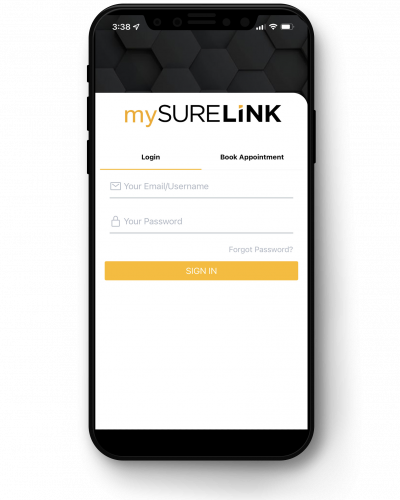
About Lead Exposure and Health Monitoring
Lead is a naturally occurring heavy metal that is found all over the world. People have used it for centuries in products ranging from cosmetics, gasoline, ceramics and paint. Despite restrictions on the use of lead in industrial settings, it remains a significant source of occupational illness. In fact, research estimates the direct medical cost of lead poisoning to be $141 million with an additional $251 million in indirect costs per year for the roughly 10,000 US workers who suffer from high occupational lead exposure. This is why it is important for employers to consider lead exposure and health monitoring services in their overall employee health and wellness program.
Lead Health Monitoring determines if there is a burden of lead in a worker’s body. Lead exposure can lead to a variety of serious health conditions, such as anemia, gastrointestinal dysfunction, and damage to the nerves and central nervous system resulting in symptoms including mood changes, hearing loss, hallucinations, and, in some serious cases, coma or death. Evidence also links persistent lead exposure with hypertension, reduced kidney function, problems with male reproductive health, and cancer of the brain, lungs, kidneys, and stomach.
SureHire’s lead health monitoring program provides a means of detecting potential changes in worker health that may have been caused by exposure to lead so that steps can be taken to stop any damage from progressing.
Program Breakdown
Lead exposure can lead to a variety of serious health conditions. In some cases, exposure can be fatal over time. In addition to the health of your workers, the health of their families may also be at risk if lead dust is taken from the workplace to the family vehicle or home on clothing, footwear, or in the hair.
SureHire’s lead health monitoring program provides a means of protecting the well-being of your employees by detecting potential changes in their health that may have been caused by exposure to lead, so that steps can be taken to stop any damage from progressing. Here’s how it works:
- Testing participants complete a health questionnaire that also covers past and present lead exposure.
- Next, participants have blood taken and analyzed to determine the level of lead in their bodies.
- Lastly, a physician reviews the information collected on the questionnaire and the results of the blood test, to determine the worker’s lead health status.
Once the participant has completed testing, employers can access the results and determine a course of action to monitor the individual’s health and prevent harmful exposure in the future.
Understanding the Results
If there is a burden of lead in a worker’s body, a variety of serious health conditions can develop. It can take many months or even years for symptoms to present themselves following the initial exposure. Where the worker has a blood level that indicates a health and safety concern, an occupational health and safety officer, under the direction of a Director of Medical Services, may require the employer to remove the worker from the worksite to avoid further lead exposure.

Checking Results
Results are available through SureLink, our exclusive client portal. SureLink is a secured online database that not only allows you to view test results but also allows you to book appointments, view snapshot reports on your dashboard, check the completion status of your appointments, receive alerts and updates from SureHire, and much more! Once your employees have finished testing, our team of experts are here to help you determine what the results mean for your company and your employee(s).
Lead Exposure and monitoring Program Inquiries
Lead exposure is a serious workplace hazard that affects workers in a wide range of industries. Proper controls and mitigating efforts can significantly reduce the threat to your workers and their families. Contact a SureHire representative to learn more about how lead exposure and health monitoring can be integrated into your company’s health and safety program. Appointments for individual tests and assessments can be booked by phone or online.
FAQs
What are the Health Risks of Short-Term Lead Exposure?
If lead levels are high enough, even short-term exposure can result in serious health problems. However, because lead poisoning is often initially asymptomatic, it is often difficult to catch until after the damage to organs is done, which is why employee monitoring is so critical. Anemia, kidney and brain damage are all severe symptoms of exposure to excessively high levels of lead. It can also cross the placental barrier and damage a baby’s central nervous system. Additional symptoms of adult exposure can include:
- Abdominal pain
- Constipation
- Fatigue
- Headaches
- Irritability
- Loss of appetite
- Memory loss
- Pain or tingling in the hands and/or feet
- General weakness
What are the Health Risks of Long-Term Lead Exposure?
The long-term effects of lead poisoning can be even more damaging. Lead is considered a carcinogen by both the Environmental Protection Agency (EPA) and other organizations. Long term exposure is also linked to high blood pressure (hypertension), heart disease, kidney disease, and reduced fertility. Additional risks associated with long term exposure to lead can include:
- Abdominal pain
- Constipation
- Depression
- Forgetfulness
- Irritability
- Nausea
What are some occupations and industries where lead can be found?
Workers in the following industries are at the highest risk of occupational exposure to lead:
- metalwork;
- manufacturing;
- demolition;
- working with scrap metal; and
- working with batteries (manufacturing and recycling)
A number of other occupations also carry a high risk of lead exposure, including all of the following:
- artists, jewelers and potters
- battery or metal recycling workers
- chrome plating workers
- demolition & renovation workers
- electronic manufacturing workers
- foundry workers
- galvanizing or galvanized metal processing workers
- glass manufacturer & recycling workers
- lead abatement workers
- lead manufacturers, miners
- refiners & smelters
- painters that apply industrial coatings
- plastics manufacturing
- plumbers & pipefitters
- radiator & automotive repair technicians
- shooting range workers
- type press printing & stamp production workers
- welders
